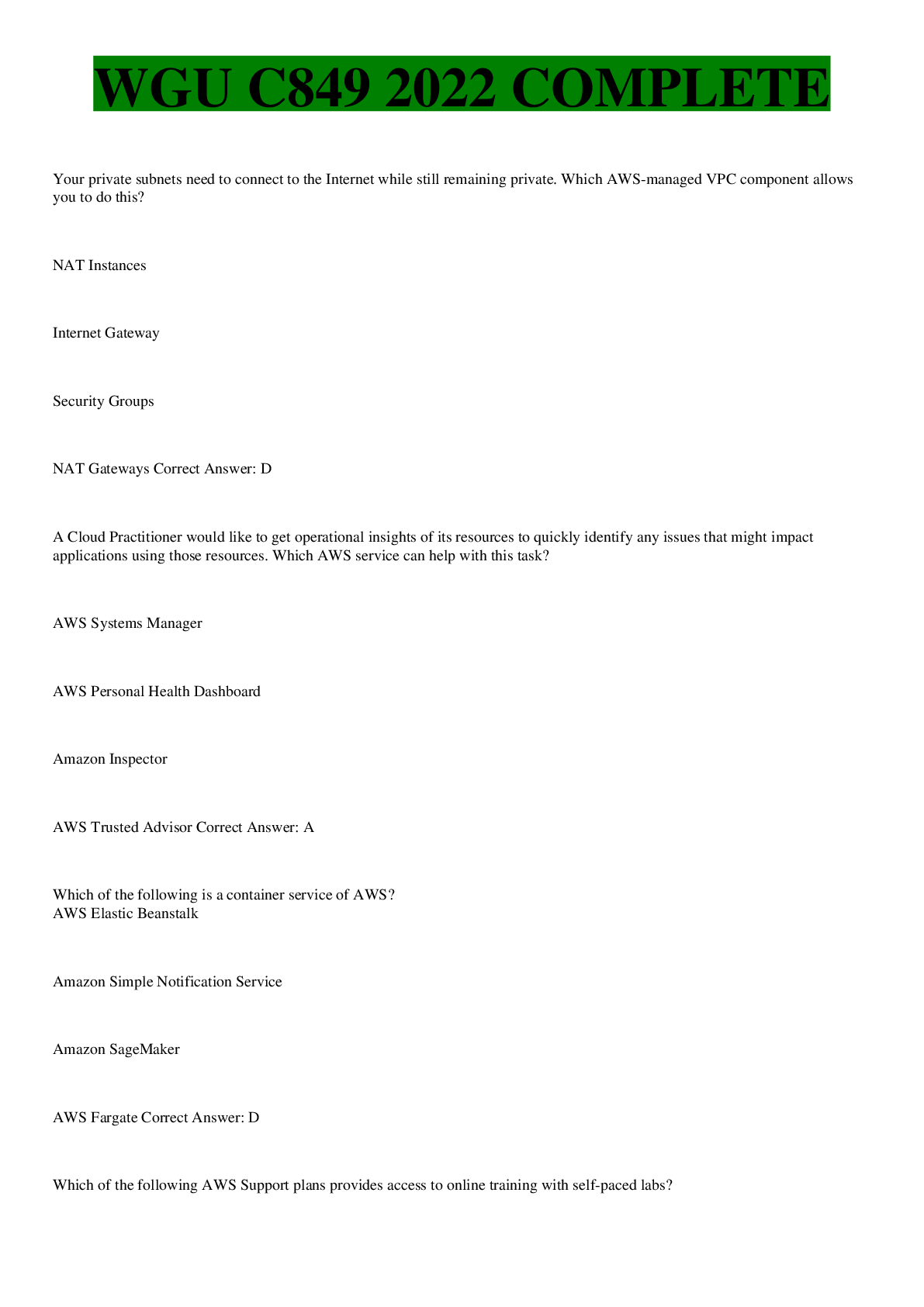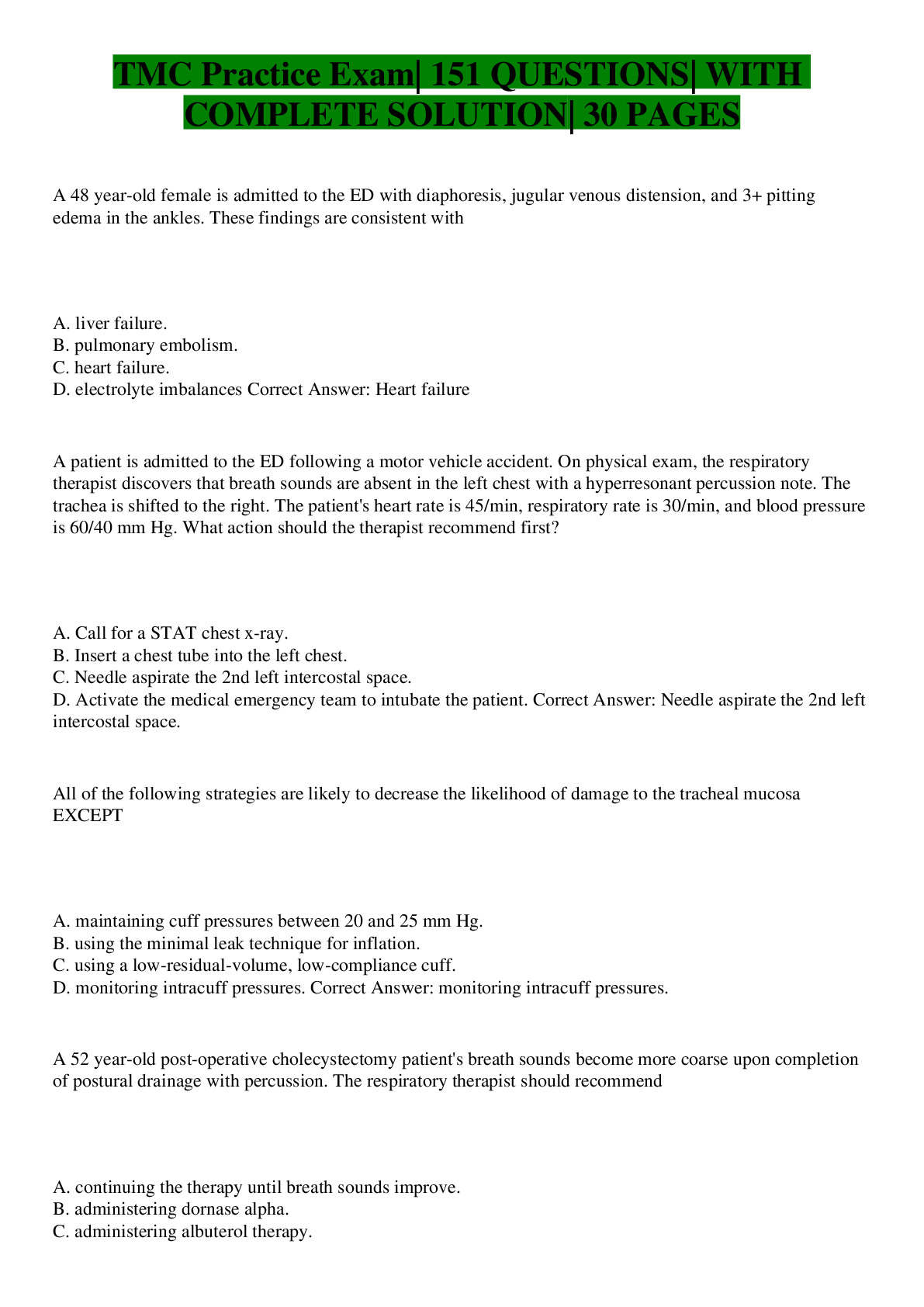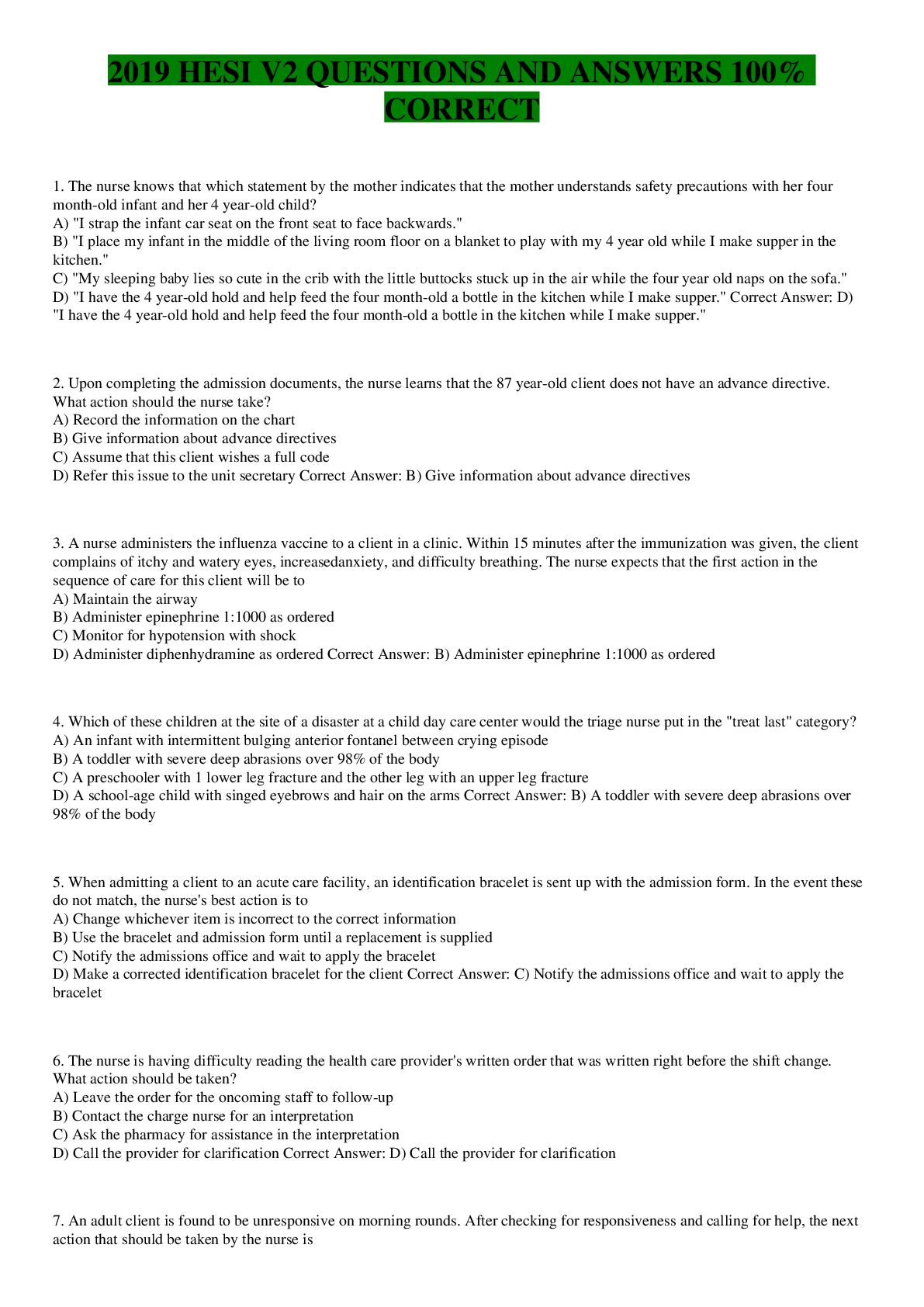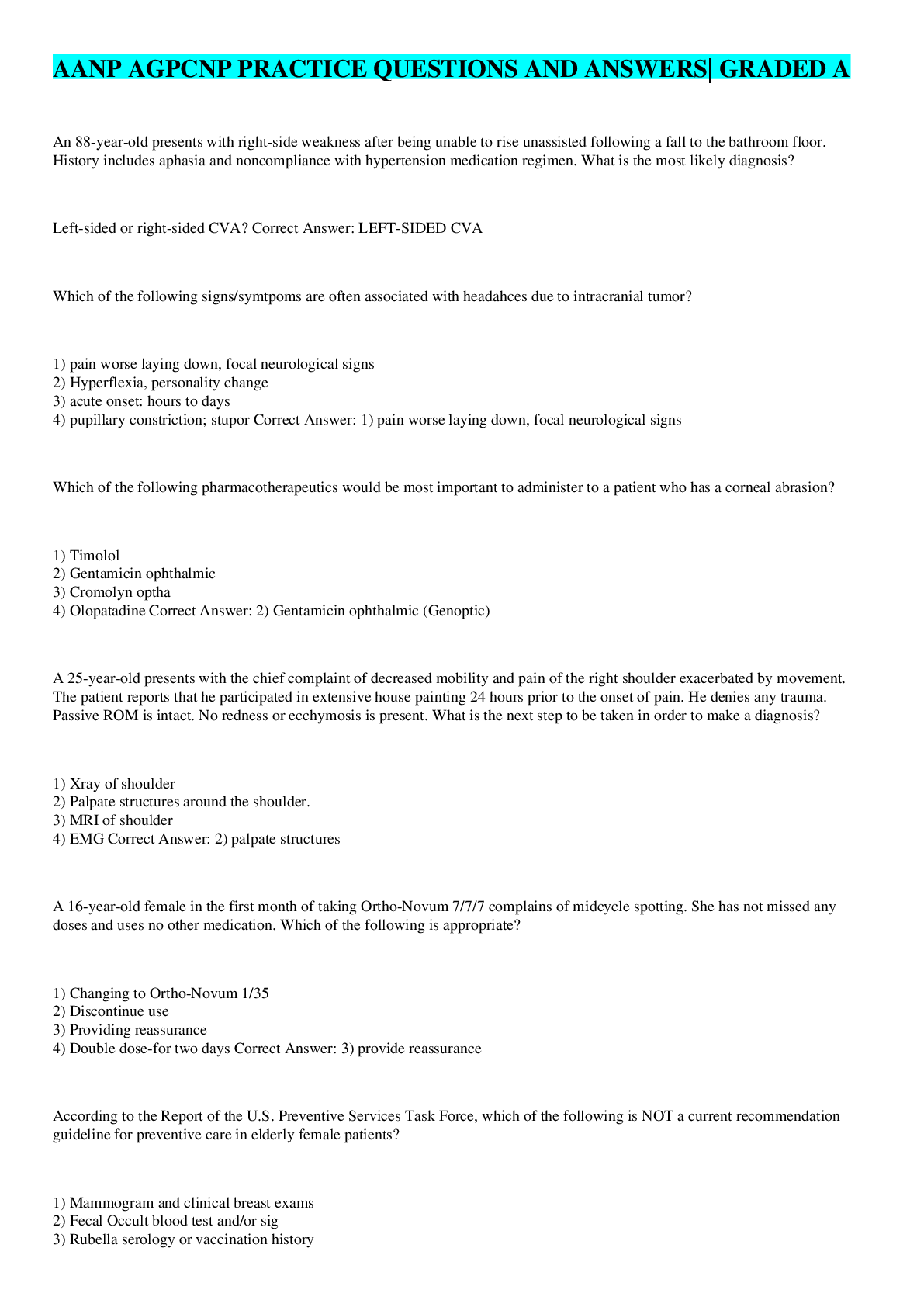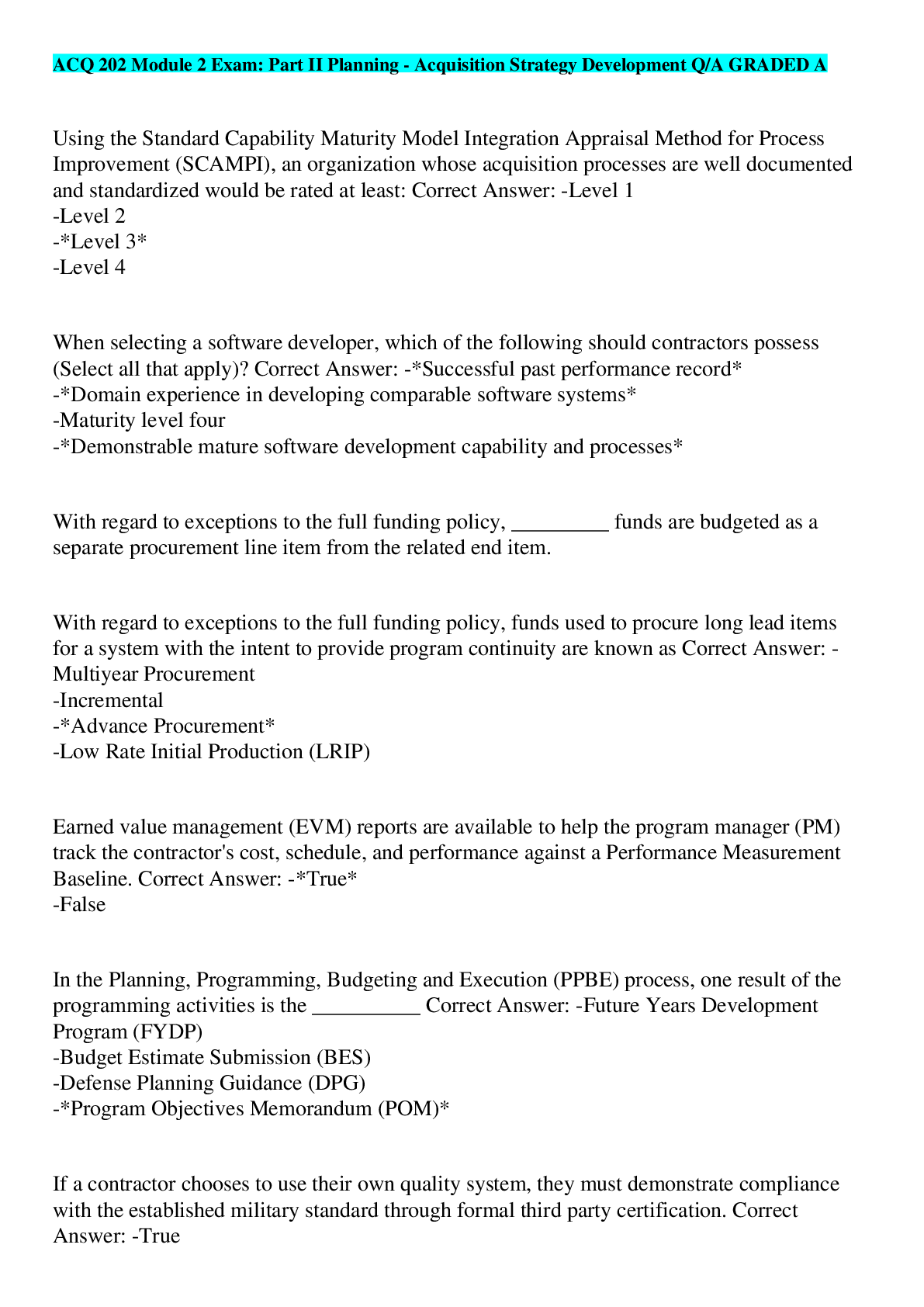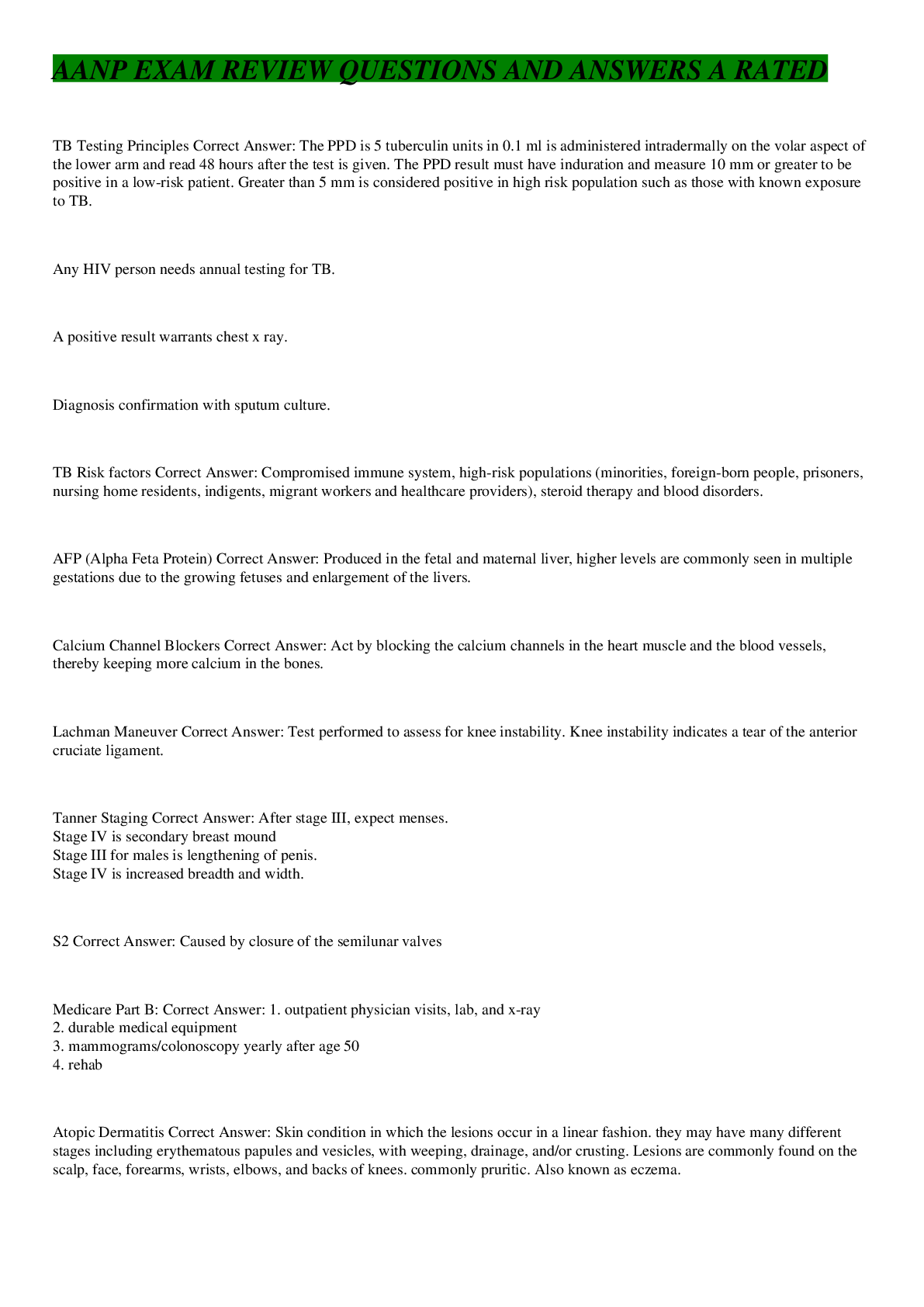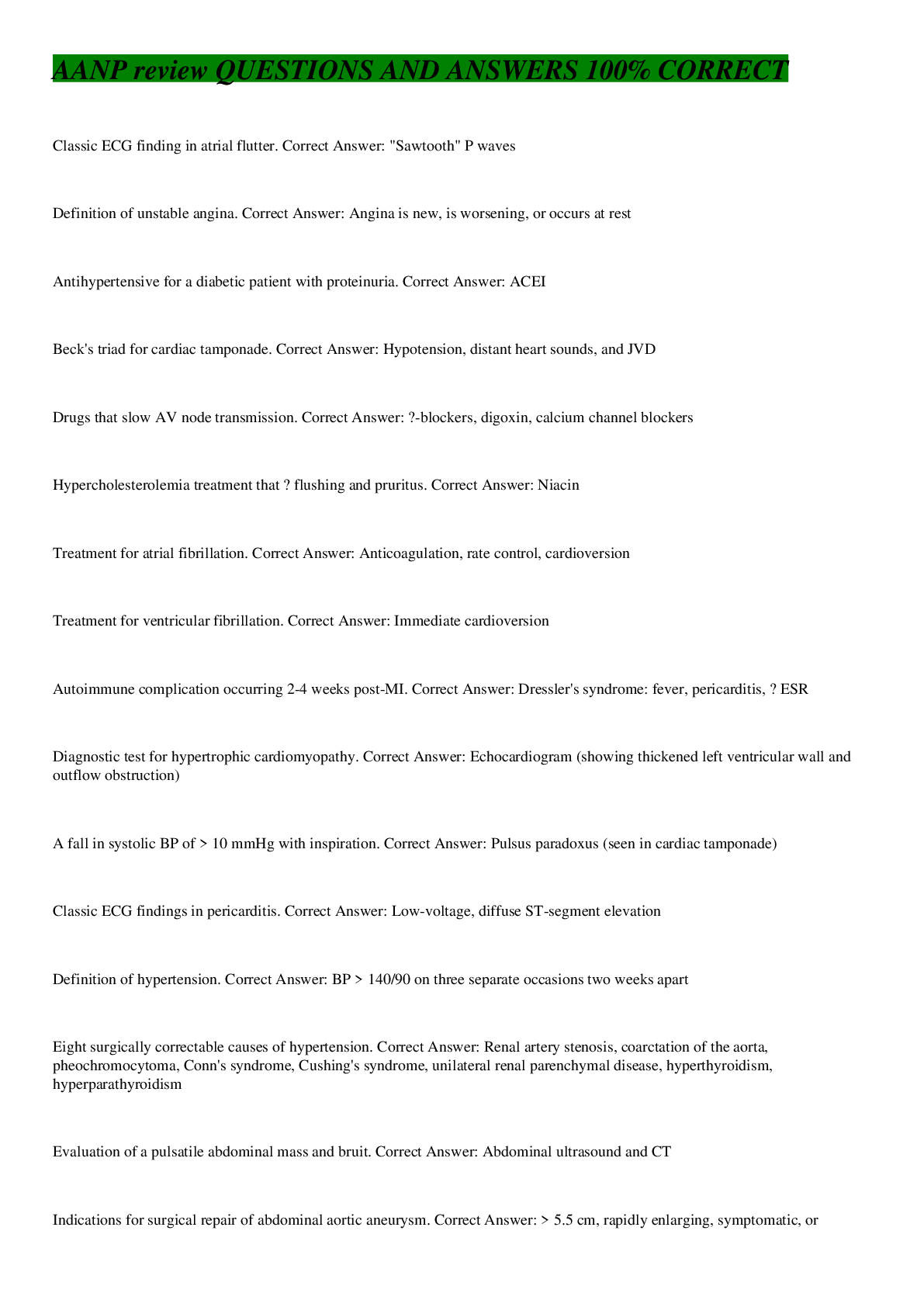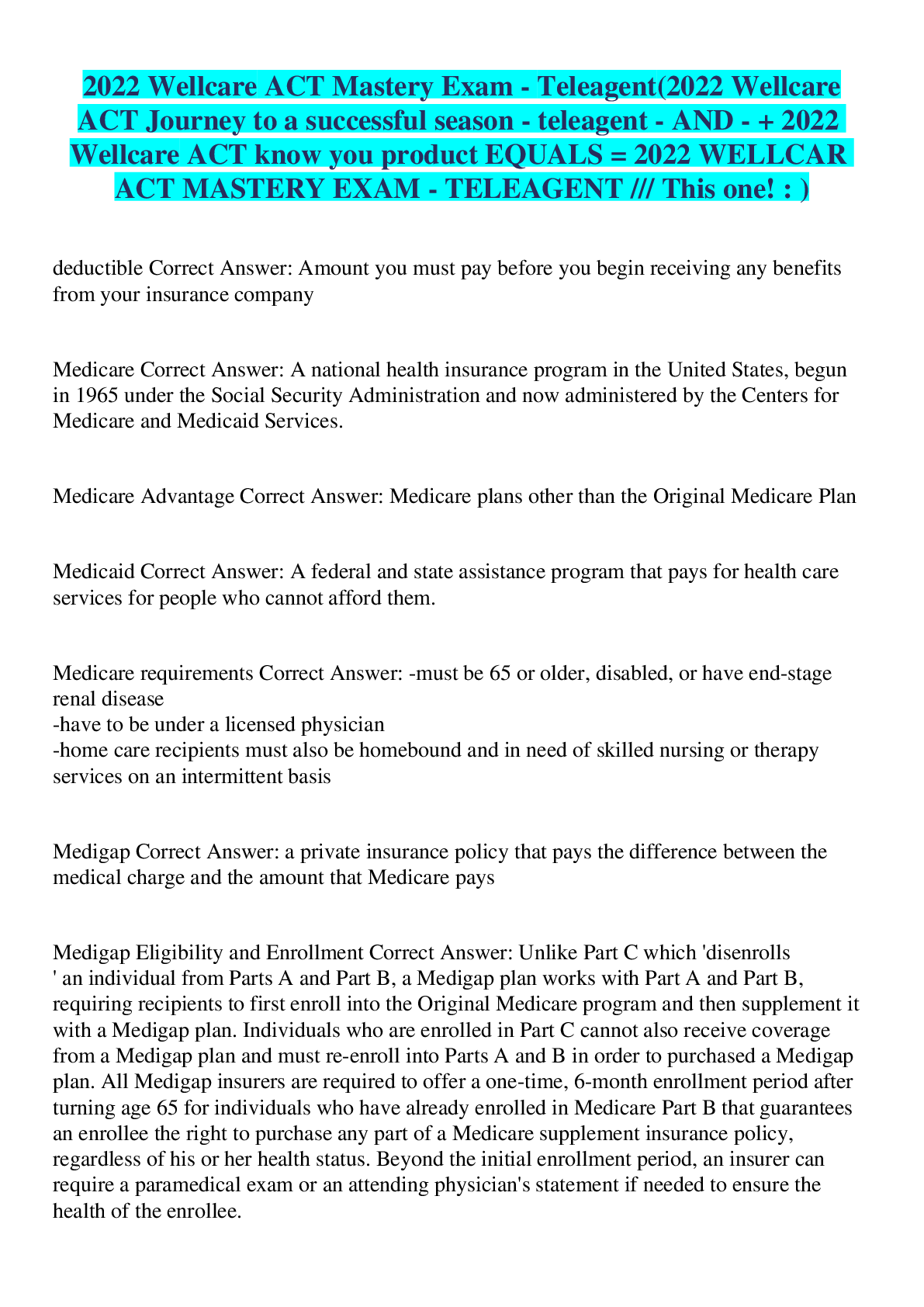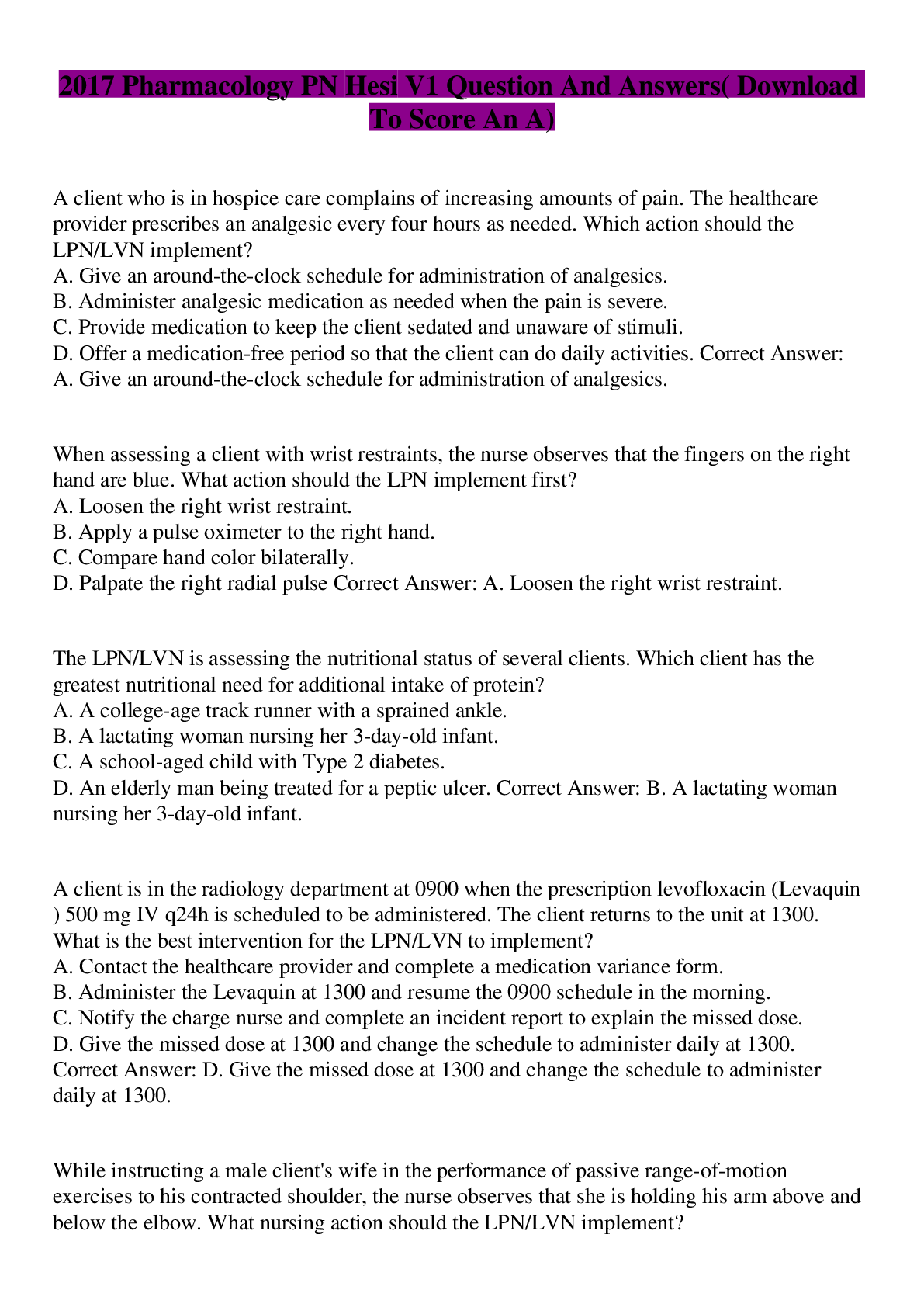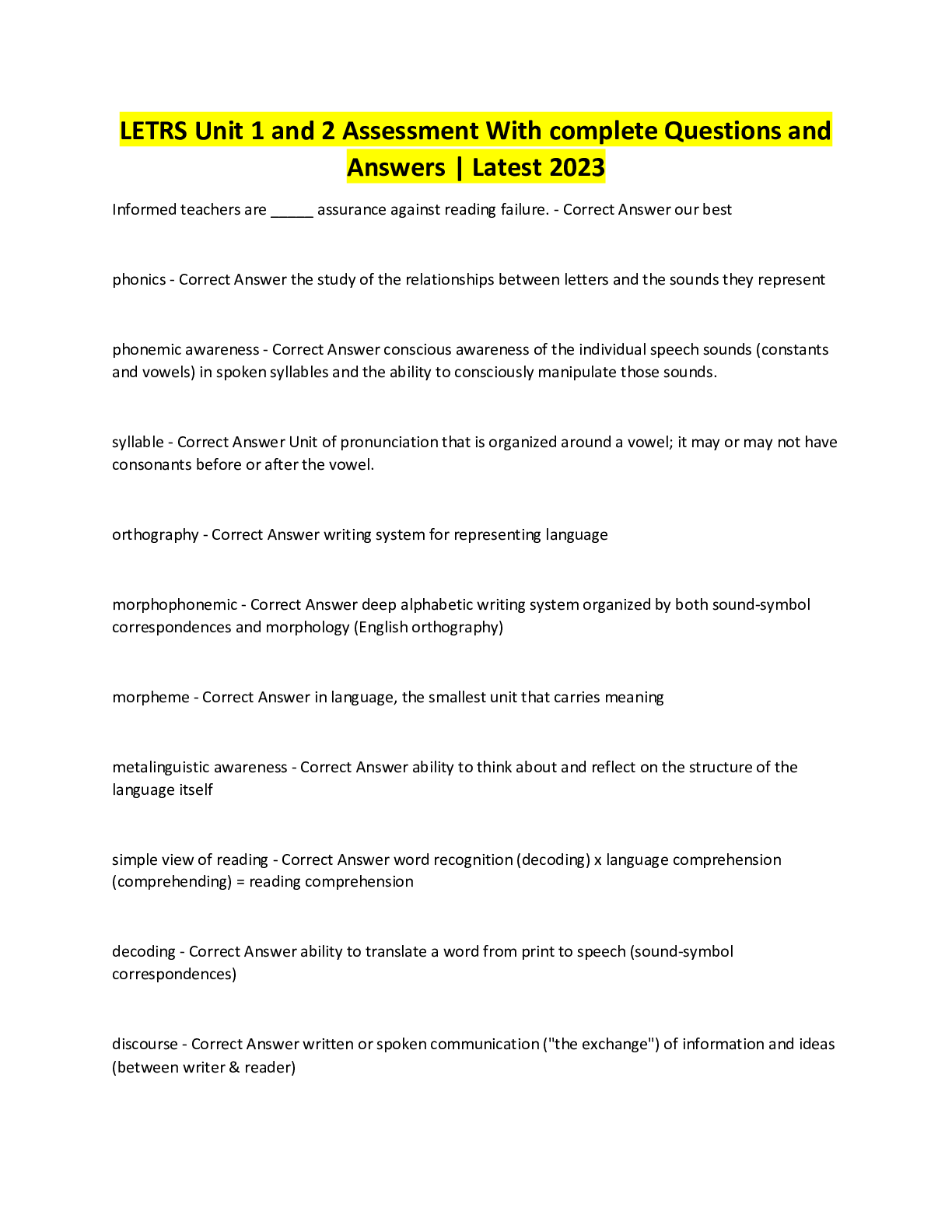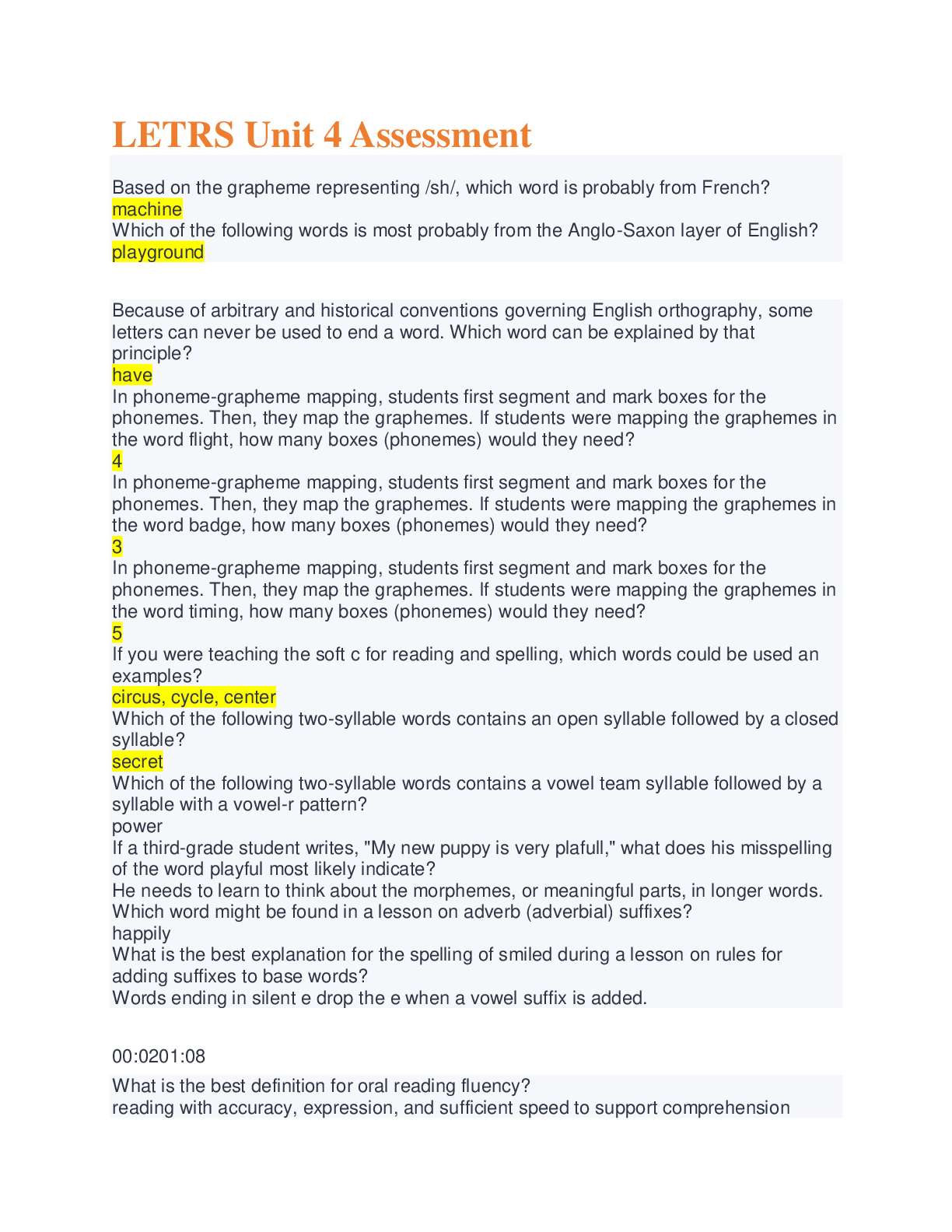Health Care > EXAM > ACLS EXAM QUESTIONS AND ANSWERS GRADED A (All)
ACLS EXAM QUESTIONS AND ANSWERS GRADED A
Document Content and Description Below
Your patient is in cardiac arrest and has been intubated. To assess CPR quality, which should you do? A. Monitor the patient's PETCO 2 B. Obtain a 12-lead ECG C. Check the patient's pulse D. Obtai... n a chest x-ray Correct Answer: A. Monitor the patient's PETCO 2 Which facility is the most appropriate EMS destination for a patient with sudden cardiac arrest who achieved return of spontaneous circulation in the field? A. Comprehensive stroke care unit B. Acute rehabilitation care unit C. Acute long-term care unit D. Coronary reperfusion-capable medical center Correct Answer: D. Coronary reperfusion-capable medical center Which of the following signs is a likely indicator of cardiac arrest in an unresponsive patient? A. Slow, weak pulse rate B. Cyanosis C. Agonal gasps D. Irregular, weak pulse rate Correct Answer: C. Agonal gasps To properly ventilate a patient with a perfusing rhythm, how often do you squeeze the bag? A. Once every 3 to 4 seconds B. Once every 5 to 6 seconds C. Once every 10 seconds D. Once every 12 seconds Correct Answer: B. Once every 5 to 6 seconds In addition to clinical assessment, which is the most reliable method to confirm and monitor correct placement of an endotracheal tube? A. Arterial blood gases B. Chest radiography C. Continuous waveform capnography D. Hemoglobin levels Correct Answer: C. Continuous waveform capnography You are caring for a patient with a suspected stroke whose symptoms started 2 hours ago. The CT scan was normal, with no signs of hemorrhage. The patient does not have any contraindications to fibrinolytic therapy. Which treatment approach is best for this patient? A. Hold fibrinolytic therapy for 24 hours B. Start fibrinolytic therapy as soon as possible C. Order an echocardiogram before fibrinolytic administration D. Wait for the results of the MRI Correct Answer: B. Start fibrinolytic therapy as soon as possible What is the recommended range from which a temperature should be selected and maintained constantly to achieve targeted temperature management after cardiac arrest? A. 26°C to 28°C B. 29°C to 31°C C. 32°C to 36°C D. 35°C to 37°C Correct Answer: C. 32°C to 36°C Which is the recommended first intravenous dose of amiodarone for a patient with refractory ventricular fibrillation? A. 100 mg B. 150 mg C. 250 mg D. 300 mg Correct Answer: D. 300 mg [Show More]
Last updated: 1 year ago
Preview 1 out of 8 pages
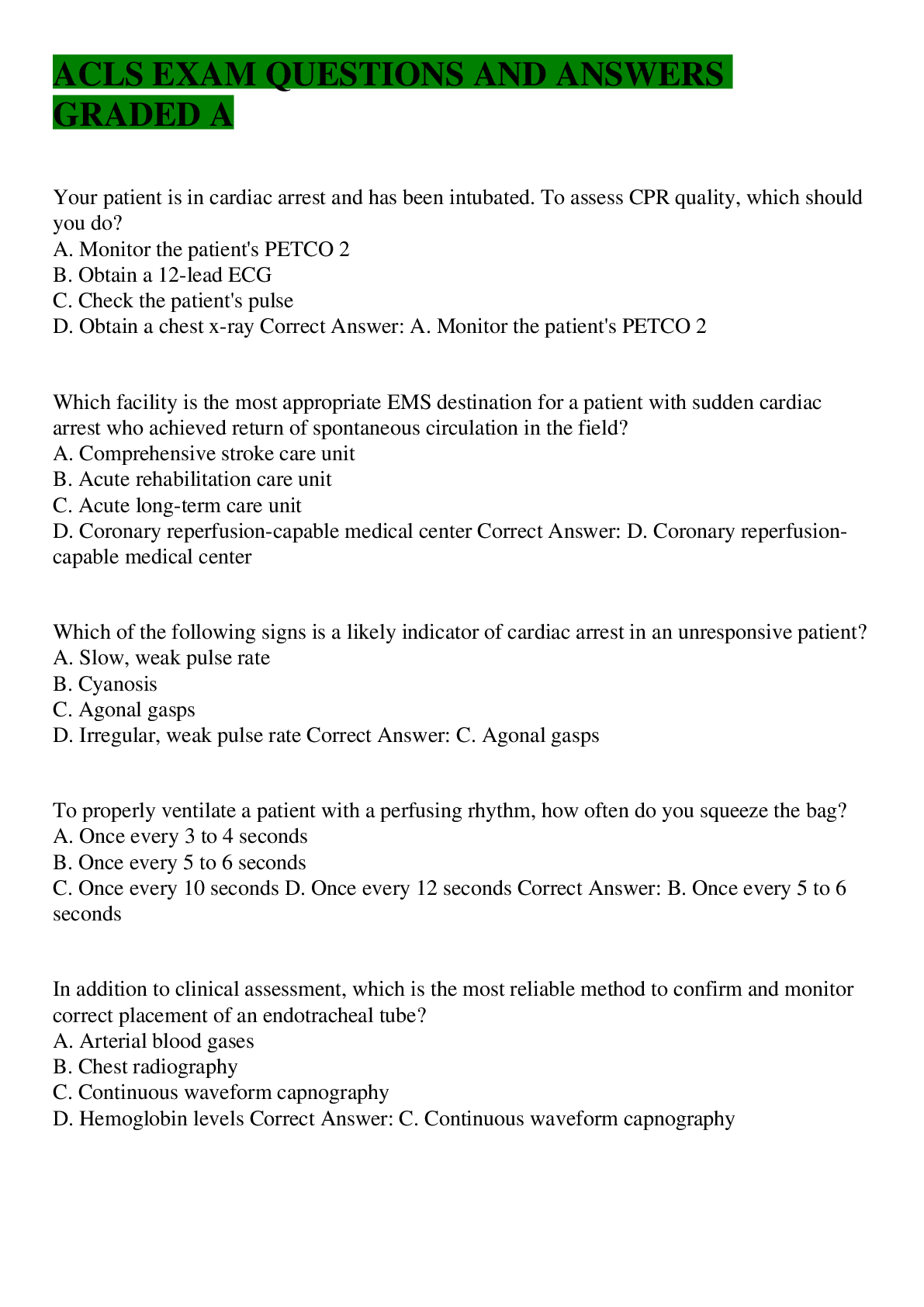
Reviews( 0 )
Document information
Connected school, study & course
About the document
Uploaded On
Oct 02, 2022
Number of pages
8
Written in
Additional information
This document has been written for:
Uploaded
Oct 02, 2022
Downloads
0
Views
37

.png)
